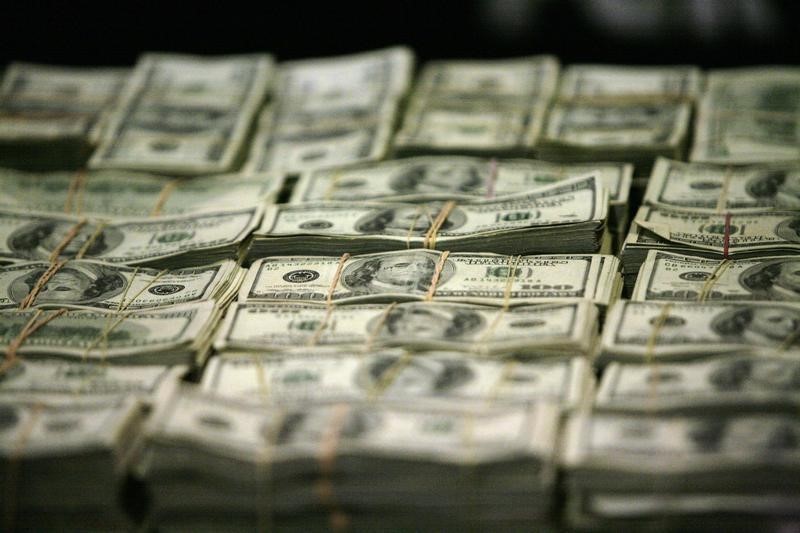Investing.com - The dollar remained at three-week lows against a basket of other major currencies on Wednesday, as investors continued to lock-in profits from the greenback's broad rally last week and as trading was expected to remain quiet with no major U.S. data due throughout the day.
EUR/USD was steady at 1.1283, after rising up to highs of 1.1385 earlier in the session as a selloff in European government bonds continued, with German 10-year bund yields rising to the highest levels since September 2014 earlier Wednesday.
German bund yields act as benchmarks for European financial markets and higher yields push the euro higher against the dollar. Yields rise as prices fall.
But sentiment on the euro remained fragile as Athens was expected to resume talks on a cash-for-reforms deal with its international lenders later in the day.
Greece’s bailout agreement with the European Union and the International Monetary Fund is set to expire at the end of this month and it cannot make further debt repayments without a new deal.
The pound pushed higher, with GBP/USD up 0.88% to two-and-a-half week highs of 1.5519.
Sterling was boosted after the U.K. Office for National Statistics said industrial output rose by 0.4% in April, ahead of forecasts for a 0.1% increase, following an upwardly revised increase of 0.6% in March.
However, the report also showed that manufacturing production fell 0.4% in April, reversing the previous month’s gains.
Elsewhere, USD/JPY tumbled 1.27% to two-week lows of 122.78, while USD/CHF slipped 0.16% to 0.9294.
The yen strengthened after Bank of Japan Governor Haruhiko Kuroda said the real effective exchange rate shows the Japanese currency is "very weak". The real effective exchange rate measures the yen’s levels relative to the currencies of Japan’s trading partners.
Kuroda also said the dollar may not necessarily rise further against the yen if the Federal Reserve raises interest rates as it is already priced into the market.
The comments came as Kuroda addressed parliament’s financial affairs committee.
The Australian and New Zealand dollars were stronger, with AUD/USD advancing 0.72% to 0.7745 and with NZD/USD climbing 0.88% to 0.7193.
Earlier Wednesday, the Westpac Banking Corporation reported that consumer sentiment in Australia dropped 6.9% this month, after a 6.4% increase the previous month.
Separately, Reserve Bank of Australia Governor Glenn Stevens signaled the possibility of further interest rate cuts in the future but added that policymakers should not expect too much from monetary policy, warning that it could lead to "much bigger problems" for the economy.
Meanwhile, USD/CAD retreated 0.57% to trade at two-and-a-half week lows of 1.2265.
The U.S. dollar index, which measures the greenback’s strength against a trade-weighted basket of six major currencies, was down 0.37% at 94.81, the lowest level since May 19.
